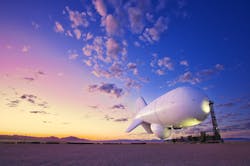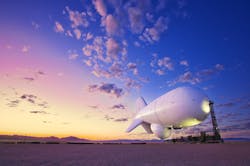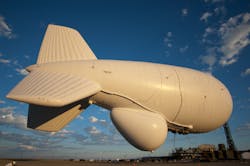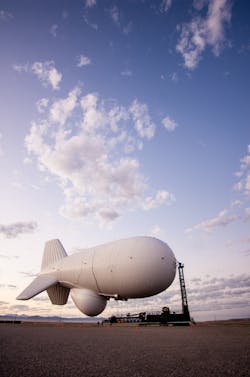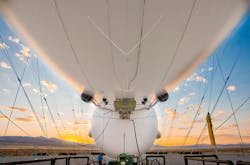Aerostat systems market to nearly triple to $9.96 billion by 2020
DALLAS, 24 June 2014. The aerostat systems market is projected to grow from $3.93 billion in 2014 to $9.96 billion by 2020, at an estimated CAGR of 16.68 percent, according to the latest market research report from MarketsandMarkets in Dallas.
Homeland security organizations are expected to spend heavily on medium and large aerostat systems, which provide enhanced intelligence, surveillance, and reconnaissance (ISR), communication, law enforcement, and border patrolling capabilities. The motivation for the drift to the aerostat systems includes low cost, long endurance, and high-resolution image transmission capabilities.
Major players that dominate the global aerostat systems market are TCOM, L.P. (Columbia), Raven Aerostar (U.S.), Lockheed Martin (U.S.), ILC Dover (U.S.), Raytheon (U.S.), RT (Israel), and AUGUR-RosAeroSystems (Russia), according to analysts.
An aerostat is a platform that uses a buoyant that is lighter than air gases such as helium, hydrogen, and hot air. These gases lift the tethered balloon with nearly the same overall density as air. The key structural components include a lightweight skin envelope that contains helium gas to provide buoyancy, payload, and a ground control station. Depending on the application of the aerostat systems are the different payloads attached such as electro-optics, communication intelligence, thermal imaging camera, electronic intelligence, surveillance radar, and inertial navigation system.
The new report provides market forecast and analysis of the aerostat systems market for the years 2013 through 2020. Research in presented by Aerostat Class (Small, Medium, Large), by Balloon Type (Spheroidal, Ellipsoidal), by Payload (Electro-Optics, Thermal Imaging Camera, Electronic Intelligence, Surveillance Radar, INS), and by Geography (North America, Europe, APAC, Latin America, Middle East).
This report provides a market analysis of the Aerostat Systems Market for the next six years. It contains an overview of the drivers, restraints, challenges, and opportunities that impact the industry. It also provides the industry and technology trends that currently prevail in the aerostat systems market. It identifies, analyses, and outlines the market size of the major spenders in each region. It also provides information of the leading competitors in the aerostat systems market.
